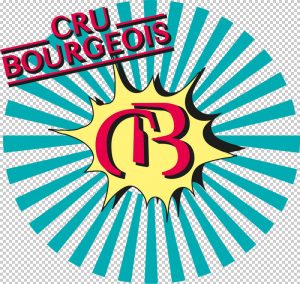Crus Bourgeois moves from an annual to a five-year model
 Another September, another list is announced of Crus Bourgeois wines, this time for the 2014 vintage. Each September for the last seven years, a list of wines has been announced from the vintage two years’ previous and meeting the minimum standards for accession to the group Crus Bourgeois.
Another September, another list is announced of Crus Bourgeois wines, this time for the 2014 vintage. Each September for the last seven years, a list of wines has been announced from the vintage two years’ previous and meeting the minimum standards for accession to the group Crus Bourgeois.
There will be a step change in the year 2020. Quite a vision(!)
I find the evolution of Bordeaux’s Crus Bourgeois group (soon to be classification, again) really interesting. Where much of the left bank is, to all extents and purposes, static (think 1855 classification), the crus bourgeois group, or family as they like to be called, allows aspiration and quality evolution, and at more modest, dare I say largely affordable, prices.
It was a brave move in 2010 for the group to keep a term (Crus Bourgeois) that had become mired in poor repute, disaffection, and occasional ridicule. We were told at the time that consumers didn’t share this trade view. I have a sneaking admiration that the Alliance des Crus Bourgeois is being proved right on this. Wine marketing zeitgeist is all about heritage, history, provenance, roots. Crus Bourgeois has all of these in spades. A new name, for essentially the same group, would have lost all of those earthy associations in a single (probably trademarked) blow.
Any property in Bordeaux’s eight Médoc appellations can apply for crus bourgeois status. It’s an annual blind tasting exam conducted by an independent third party. You’re in or out. It’s quite expensive for properties to undertake, there’s a lot of admin, you have to do it every year, which isn’t great for medium term, let alone long term, marketing strategy. And yes, it is absolutely a broad and large church, with around 260 members each year. In the UK bottle prices vary between about £10 to £30 – quite a range. This rather large range of price spectrum and a rather large group are possibly a couple of the things that have led to this year’s announcement that a classification, with rankings, will be re-introduced from the year 2020 (i.e. the 2018 vintage).
Crus Bourgeois will move from an annual to a five-year model. It will become a classification of three ranks: crus bourgeois, crus bourgeois supérieur and crus bourgeois exceptionnel.
Armelle Cruse, the manager of Château du Taillan, and vice president of the Alliance des Crus Bourgeois, said of the 2014 list “it is the biggest family we had [278 properties]. We are happy that it stays attractive and more people want to apply for it.”
Explaining the changes to the system, she said “we think it is important to clarify our offer and put everyone in their position”, that is, ranking from top to bottom in a large group. She added “we will also introduce the notion of consistency of wine quality and its capacity to age.”
As though to welcome other producers to consider applying, Cruse concluded “if you work well, there is no reason not to become crus bourgeois.”
Whilst this next stage for crus bourgeois has been approved by a commendable 78% of the membership, it all needs to be finalised and go through the usual French channels of approval.
Nuts and bolts
- The classification is valid for five years.
- Only bottled stock will be assessed.
- In the first classification (to overcome transitional issues such as having insufficient historical bottle stock)
- any property having passed the crus bourgeois certificate for five years between the 2008 and 2016 vintage will automatically be crus bourgeois (basic level) in 2020.
- any property having been part of crus bourgeois for fewer than five years between 2008 and 2016 vintage, or not having been part of crus bourgeois at all, will be required to submit five vintages, between 2008 and 2016, to be blind tasted. Basic level can be achieved
- Any property wanting to apply for a level higher than basic – Supérieur or Exceptionnel – will have to pass a blind tasting under the control of an independent third party.
- There are three new criteria in addition to the existing tasting criteria.
- Agricultural and environmental practices. A requirement to have a certified environmental system in place, such as SME for supérieur and HVE level 3 for exceptionnel.
- Property management. A third party assessed visit to determine “the quality of wine in the management of the vineyard, winemaking and ageing” Cruse said. It will include traceability through winemaking to vineyard plot.
- Promotional strategy. Cruse explained this will include details of “pricing and distribution policy, promotion of the brand and communications”, including what the property brings to the crus bourgeois group.
- In the second classification (2025), only vintages 2019 to 2023 will be assessed (and so on).
- Anyone wanting to apply will have to wait for the next cycle. No mid-cycle applications will be considered.



